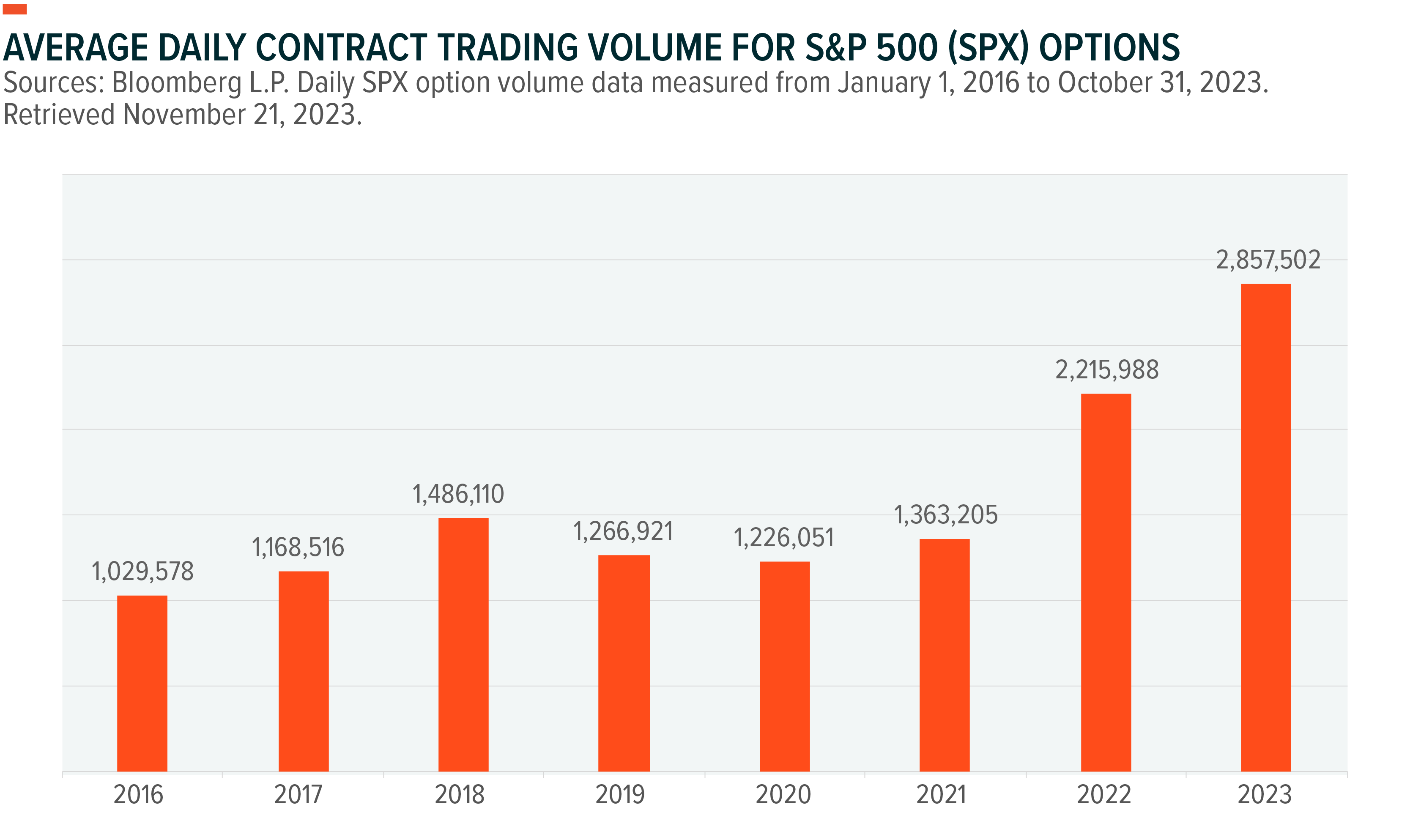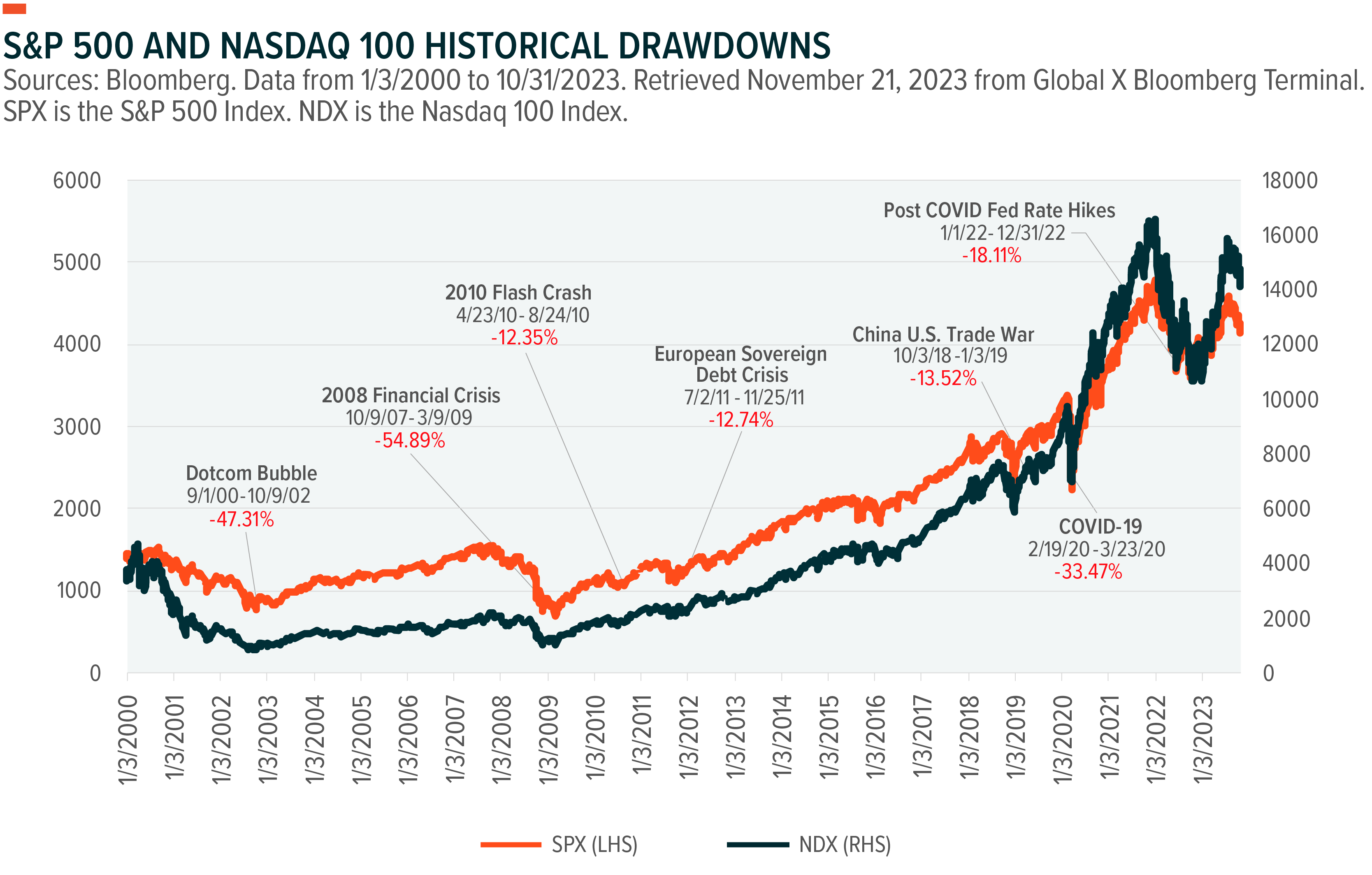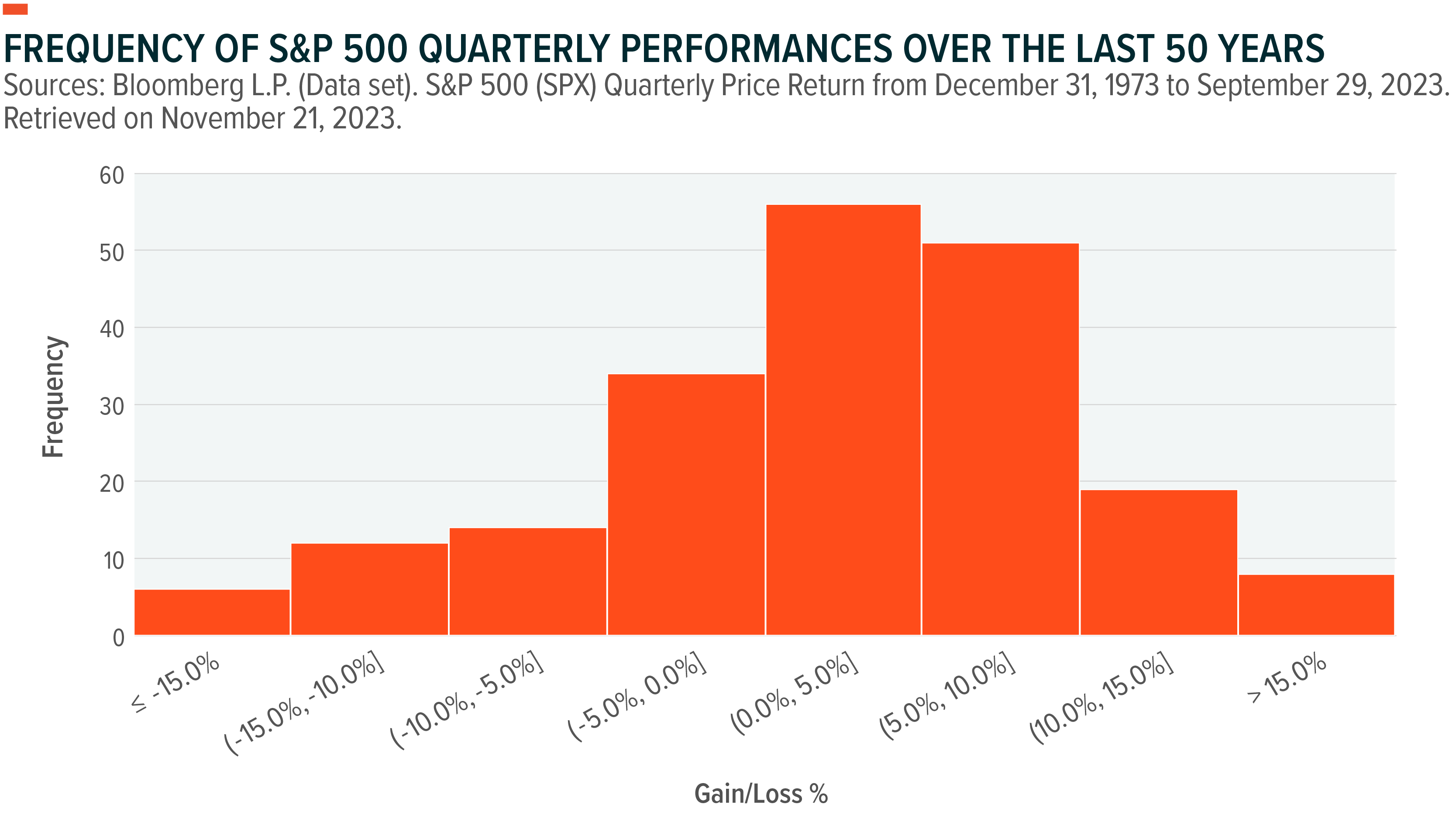Fifty years ago, the Chicago Board of Trade developed the first modern options exchange, the Chicago Board Options Exchange (Cboe). In the years since its launch in 1973, options strategies have become increasingly comprehensive, giving investors opportunities to implement combinations of option type, strike, and expiration as factors into their portfolios. The heightened level of flexibility has promoted the use of options to address a wide array of risk factors. Most recently, instruments like 0DTE options and derivative-based ETFs have stepped into the limelight as opportunities to address event-driven risks.
Key Takeaways
- Portfolio administrators are often required to manage a broad scope of risk factors. Traditional diversification may help mitigate specific concerns, but purchasing option contracts might represent a more effective approach by which to deal with event-driven market moves.
- Options with zero days until expiration, dubbed 0DTEs, have a relatively short track record within the space. However, they are already making up more than 50% of daily options trading volume on the S&P 5001, with investors harnessing their low cost in an effort to hedge against daily price swings.
- Passive option strategies utilized within the ETF structure can similarly provide a degree of protection against event-driven market declines. Global X’s derivative-based product portfolio seeks to do so by incorporating longer-dated option contracts, maintaining a near-perpetual source of potential loss mitigation.
Put Options Check a Lot of Boxes for Risk-Conscious Investors
At one time or another, most investors have probably seen equity positions that they’ve held take a hit in response to an underwhelming earnings report. Surprise decisions by governing bodies of the monetary system are also likely to have led to some unexpected drops in stock values. And though efforts to diversify across sectors and asset classes can help provide a modicum of protection against these events, watching any position trend into the red can leave investors questioning if there was anything they could have done to prevent it.
Incorporating put options into a portfolio can provide this avenue, or at least have the potential to alleviate this sentiment. Offering flexibility and easy implementation, put options are contracts that give the purchaser the right, but not the obligation, to sell shares of an underlying security to a counterparty at a predetermined strike. These contracts can help establish a level of maximum loss potential for the purchaser, which can be particularly useful when dealing with event-driven market moves. These attributes have likely driven interest in options trading in recent years, particularly on the S&P 500 index since the 2020 pandemic.2

Single-Day Contracts May Address Scheduled Events, But There are Drawbacks
Index options with zero days until expiration (0DTE) have grown tremendously popular over the last couple years. Their limited time value makes them an inexpensive investment and they can provide a degree of liquidity that is necessary to enter and exit positions seamlessly. When an investor sees an important economic news release or the announcement of election results coming up on their calendar, they can simply mark the date and enter into a 0DTE put contract to limit the impact that it might have on their portfolio.
Like any other put option strategy, the funds required to create the 0DTE position (the premium paid) will reduce the price appreciation potential of the position, but at a low cost this might not seem like much of a deterrent. In fact, average SPX option bid/ask spreads recently tightened to reflect the market exhibiting softer volatility, and this made 0DTE trades on SPX options even more affordable.3 That said, owing to their short time until expiration, 0DTE put strategies likely require investors to be more actively engaged. They must find and purchase options in a timely fashion while being cognizant of events that necessitate their use. Investors may be able to anticipate some of these underlying events, but history tells us that some of the largest drawdowns to have taken place across the broader markets were unforeseen, and their impact lasted longer than just one day.

Passive Strategies Can Hedge Event-Driven Market Declines Too
Options with zero days to expiration can mitigate event-driven risks, but investors must be able to pinpoint the right time to purchase them, evaluate their desired degree of downside protection, and implement the strategy with tact and attentiveness. That is, protective 0DTE strategies typically require active management. For investors looking for a low-cost passive investment, however, the Global X Nasdaq 100 Collar 95-110 ETF (QCLR) and the Global X S&P 500 Collar 95-110 ETF (XCLR) employ put options, as well. However, because these funds incorporate options with three-month tenors, and roll their positions on a quarterly basis, they can theoretically be held in perpetuity.
The collar 95-110 strategy features buying put options that are 5% out-of-the-money, which are partially funded by selling a 10% out-of-the-money call option. The trade-off helps keep the cost of funding the downside protection low, and it allows an investor to still reap the benefit of up to 10% upside price appreciation associated with the underlying investment over the roll period. QCLR and XCLR incorporate options that expire quarterly, and they are rolled on a quarterly basis as well. This essentially allows them to create a floor on potential losses incurred by the Nasdaq 100 and S&P 500, respectively, and that floor is reestablished from one outcome period to another.
Over the last 50 years, the S&P 500 has recorded quarterly declines of 5% or more in 16% of all cases. Meanwhile, it has recorded gains in excess of 10% in 13.5% of cases. Implementing the collar 95-110 strategy would likely help narrow the tails associated with this distribution and provide investors with less widely-oscillating price returns for their equity investments. The put options they employ would also help provide downside price mitigation for market detractors that have an impact lasting over a series of trading days.

Tail risk strategies can approximate similar exposure to broader equity indexes. For example, the Global X S&P 500 Tail Risk ETF (XTR) and the Global X Nasdaq 100 Tail Risk ETF (QTR) offer investors uncapped upside price appreciation potential (minus the cost of the premiums paid) and a floor against drawdowns greater than 10% from the purchase of the put to the option’s expiration in three months. These funds similarly roll their options on a quarterly basis. However, because of the level of moneyness at which they seek to purchase their put options, the Global X Tail Risk ETFs’ puts still come at a low cost. These funds buy put options that are 10% out of the money on a quarterly basis, and they, too, can allow investors to operate without necessarily specifically pinpointing unforeseen market moving events.
Conclusion: Passive Options Strategies Can Be Good News for Bad News
Of the many risks that investors must endure during the course of a trading day, those that are associated with news-related events can be some of the most detrimental to performance. 0DTE options can mitigate the risk of these events, but they often require an active management style, which can be challenging to maintain or implement effectively. In our view, Global X’s passive index collar and tail risk derivative strategies can provide a constant source of downside mitigation while maintaining a core exposure to some of the largest domestic indices. Another important factor to consider when evaluating these strategies is that event-driven market declines may not only last for one day. It’s one of the key reasons why having a rolling strategy in place can provide more seamless protection than an active 0DTE defensive strategy.
Related ETFs
QCLR – Global X Nasdaq 100 Collar 95-110 ETF
XCLR – Global X S&P 500 Collar 95-110 ETF
QTR – Global X Nasdaq 100 Tail Risk ETF
XTR – Global X S&P 500 Tail Risk ETF
Click the fund name above to view current holdings. Holdings are subject to change. Current and future holdings are subject to risk.
 Robert J. Scrudato
Robert J. Scrudato